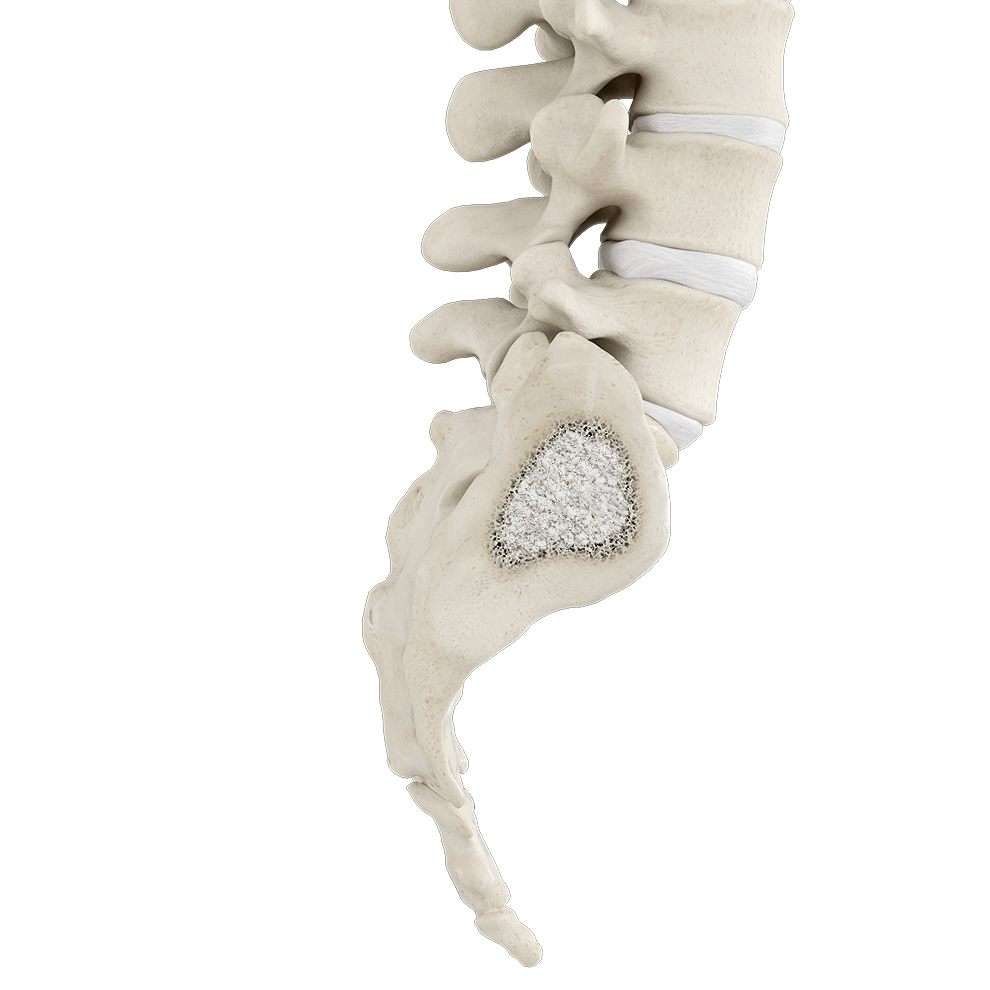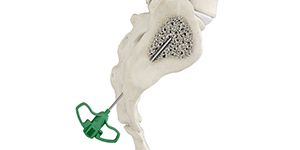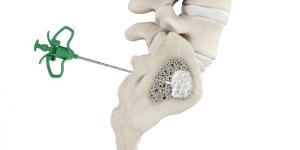
Sacroplasty
See clearly. Treat precisely.
Using fluoroscopy or CT guidance, sacroplasty can be performed safely in patients for the precise delivery of acrylic bone cement into sacral insufficiency fractures (SIF).
A 2019 analysis suggests that sacroplasty is safe and effective for the treatment of osteoporotic or malignant sacral fractures. Statistically significant improvements in VAS pain scores have been observed up to 12 months in patients.1
Benefits
Average delay in diagnosis of SIF after referral to Emergency Department: 23.9 days.7
An alternative for improved pain relief
The standard of care for the treatment of SIFs has been conservative management, with any combination of bed rest, analgesics, physical therapy and use of a brace.5 And yet, studies suggest that sacroplasty is a safe and effective procedure that provides rapid and sustained pain relief in patients with SIFs58
Procedures9
Long-axis approach

1
In the long-axis approach, the cannula is passed along the ala of the sacrum in a caudal-cephalad direction.

2
The cannula is advanced using the lateral projection until needle tip is 1cm inferior of the center of S1 vertebral body.

3
As the space at S1 is filled, the cannula is slowly withdrawn while the cement is being injected.
Short-axis approach

1
In the short-axis approach, the cannula is placed perpendicular to the fractured level.

2
The cannula is advanced using lateral projection.

3
As the space in S1 is filled, the cannula is slowly withdrawn while the cement is being injected.

